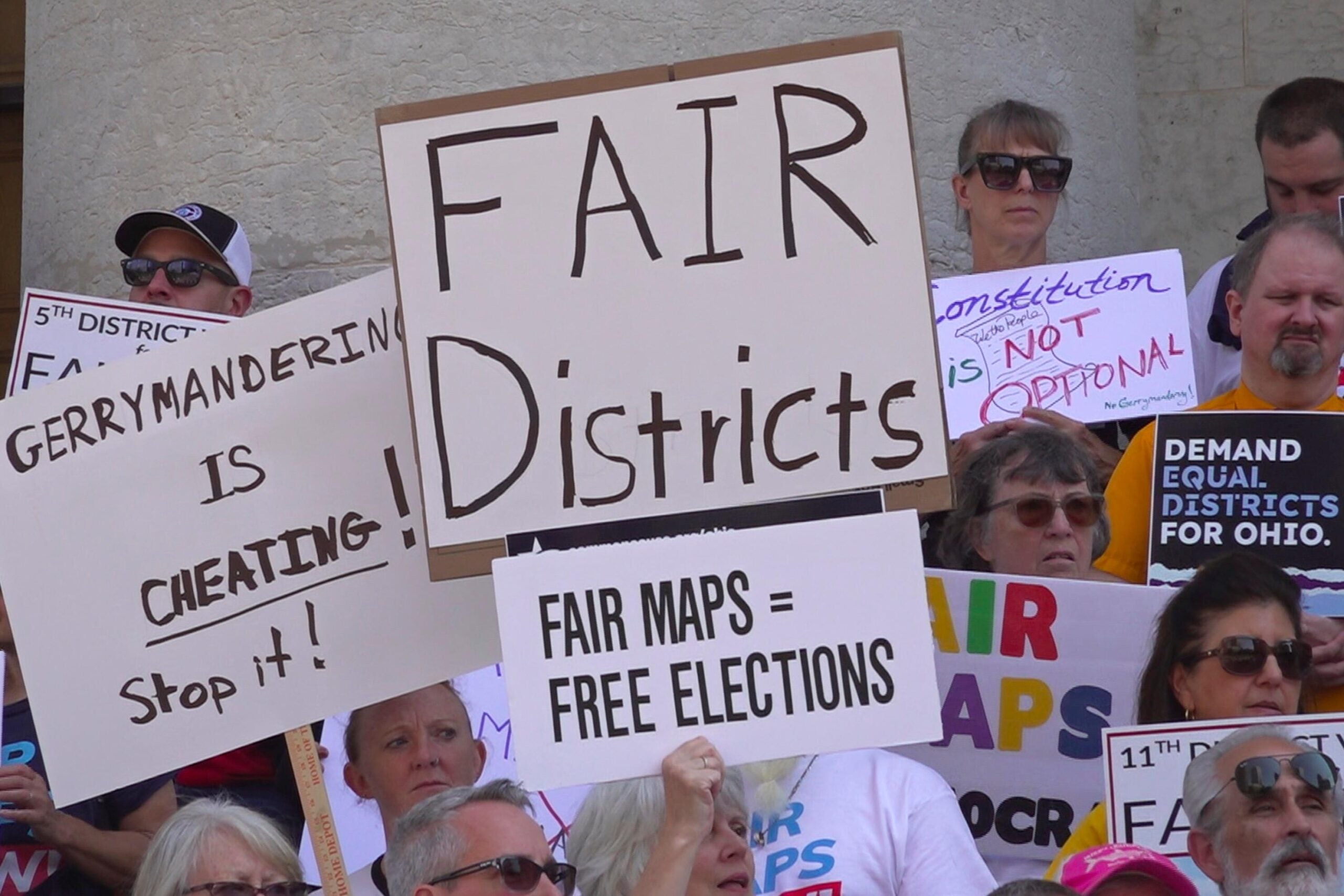A coalition of groups that have worked with Democrats on redistricting issues in Wisconsin have asked a federal court to dismiss their case against the state’s now-defunct legislative district maps.
The step represents an important shift in the legal battle over redistricting in the state, as groups turn their attention from the state’s last set of maps, which were signed into law in 2011 and are no longer in effect, to a new set approved by the state Supreme Court last month.
In the short filing, lawyers representing Black Leaders Organizing for Communities, Voces de la Frontera and the League of Women Voters of Wisconsin said claims made in their 2021 lawsuit don’t apply to the new maps.
News with a little more humanity
WPR’s “Wisconsin Today” newsletter keeps you connected to the state you love without feeling overwhelmed. No paywall. No agenda. No corporate filter.
Mel Barnes, one of the lawyers representing the groups, said the legal fight over political district lines in Wisconsin is far from over.
“This is not the end of the fight for the fair maps Wisconsinites deserve,” she said, adding the new maps “even further entrench the extreme partisan gerrymander” of the old district lines.
“These new maps, that problem, is now our focus,” Barnes said.
Groups could choose to appeal the latest Wisconsin Supreme Court ruling that establishes the current maps to the U.S. Supreme Court, or to file a new federal lawsuit against the maps.
Barnes said any forthcoming challenges would be highly unlikely to change maps before the fall 2022 election.
“That does not mean, however, that these maps will necessarily be in place for the remainder of the decade,” she said. “We know that Wisconsin is with us, and we look forward to continuing to pursue fairness in our state.”
Democrats have been pushing back on Wisconsin’s political district lines since former Republican Gov. Scott Walker signed GOP-drawn maps into law in 2011. Under those maps, Democrats have struggled to win more seats in the state Legislature, even as their candidates have performed well statewide. Political scientists have called the 2011 maps among the biggest partisan gerrymanders in modern U.S. history.
The new maps further entrench that GOP advantage. Under the new boundaries, Republican lawmakers have a realistic chance of winning a two-thirds majority in both chambers of the Legislature. If they accomplish that, lawmakers would be able to override any veto from the governor.
For more on the history of redistricting in Wisconsin and how it impacts political power in the state, check out WPR’s investigative podcast series, “Mapped Out.”
Wisconsin Public Radio, © Copyright 2025, Board of Regents of the University of Wisconsin System and Wisconsin Educational Communications Board.





